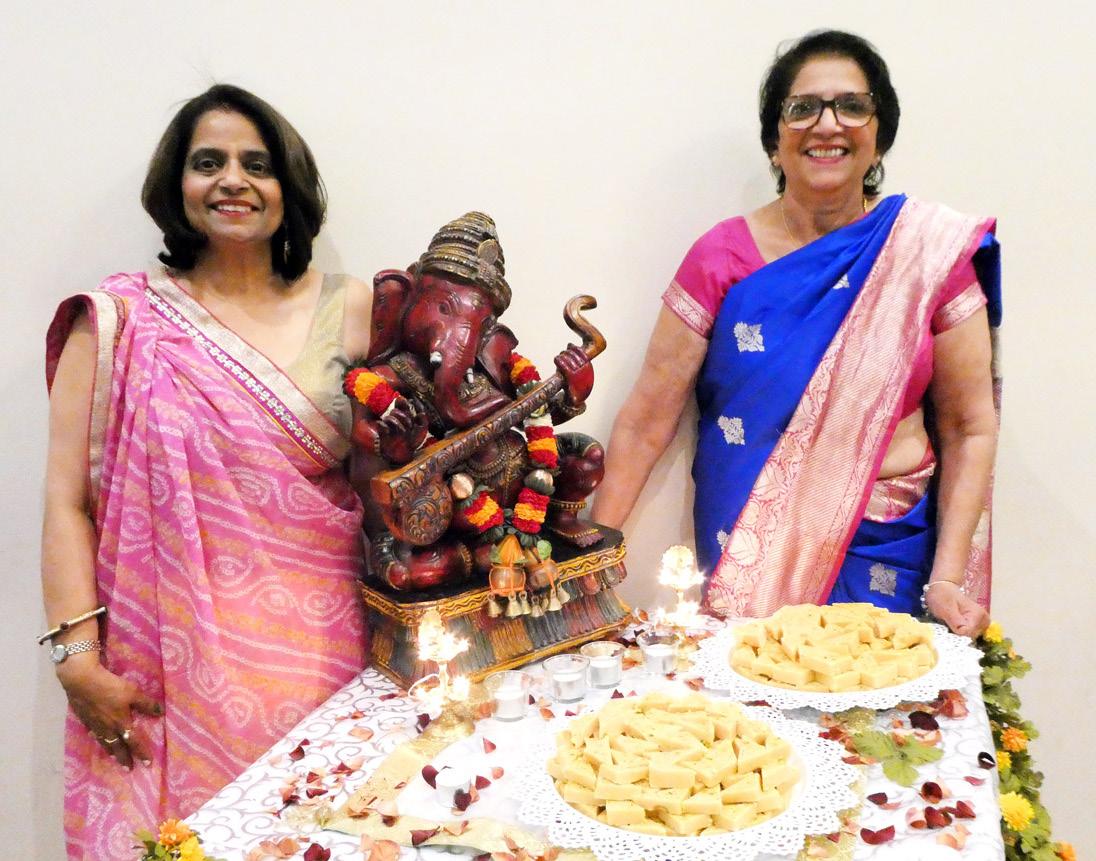
13 minute read
AHIA’s silver Diwali
from 2019-11 Sydney
by Indian Link
It was a beautiful silver-themed Diwali this year for the Australian Hindi Indian Association (AHIA), as it marked its silver anniversary.
Long-time friends within the AHIA family gathered at the Croatian Club Punchbowl to wish each other Happy Diwali and enjoy a fun evening with fine food and festivity. Coordinated by Preeti Thadani and Sushma Ahluwalia with support from Channa, Kalra and Sachdev families, the evening also provided opportunities for a walk down memory lane, as well as to honour long-serving volunteers.

MCs Preeti Thadani and Benny Manuel guided the evening with elegance.

Entertainment provided by the Seven Sirens was wonderfully diverse in its presentation, including elements of many different genres.
The Diwali feel came from a skit written and performed by Mandeep Keith and Hemant Malik, centred around celebrating Diwali in a land far from home.
The stand-out event of the night though, was Jai Ho: a group dance jointly presented by an eclectic group of AHIA members of all ages. Gentle in its choreography and execution, the dancers clearly enjoyed every minute of it, smiling their way through and finishing with a flourish. It had the audience up on their feet cheering wildly.

Earlier, President Yash Bhasin outlined the achievements of AHIA in 25 years, including the large-scale celebrations of Indian festivals, social justice programs in the mainstream, music and literary events and family-centric programs. It brings out a monthly newsletter in Hindi. But its most consistent activity has been its Seniors Forum, which caters to the social needs of our elderly. This forum has benefitted many hundreds of families in 25 years, and has inspired the birth of many other seniors’ platforms in the community. At its Diwali bash, three Seniors’ coordinators Bindu Kalra, Dr Rakesh Sachdev and Santram Bajaj were felicitated for their selfless service in this area.
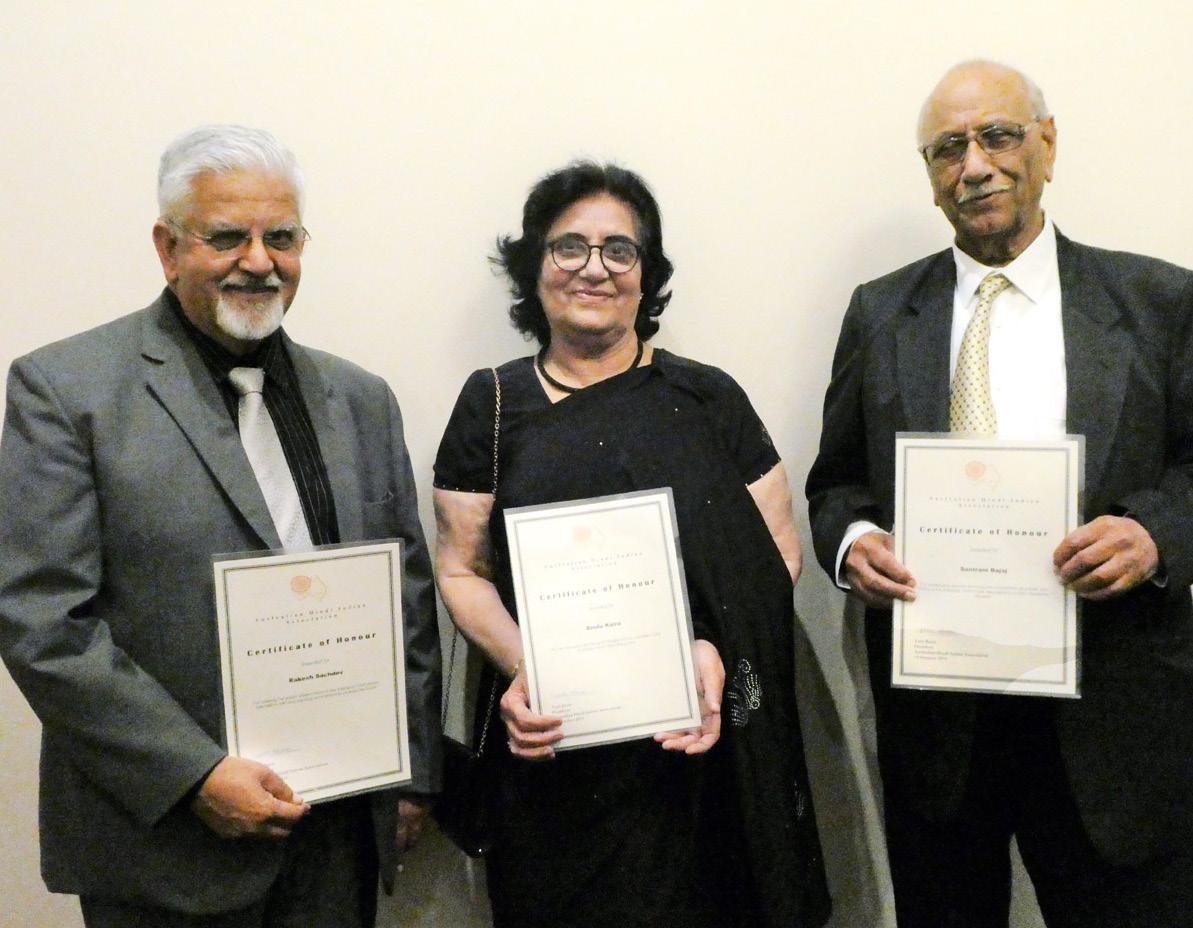
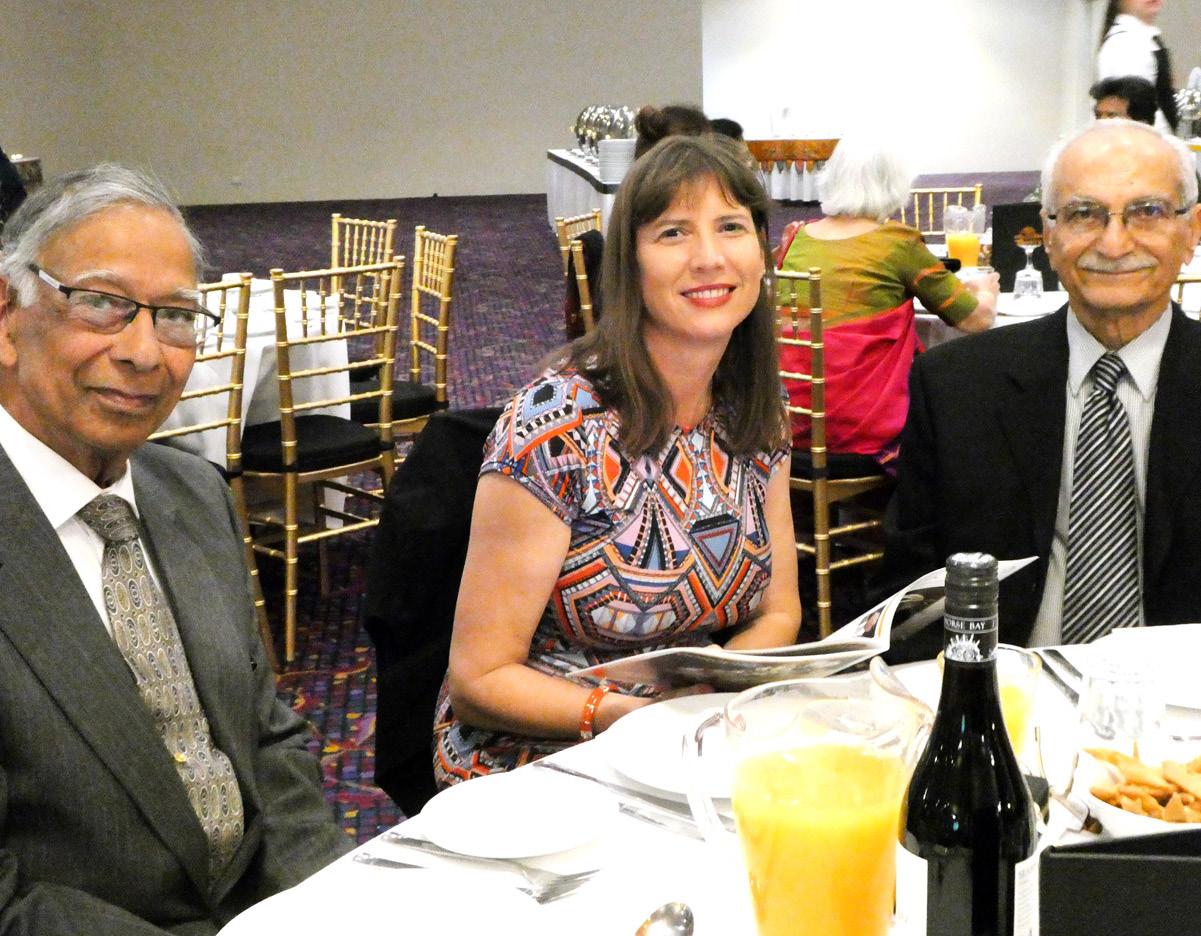
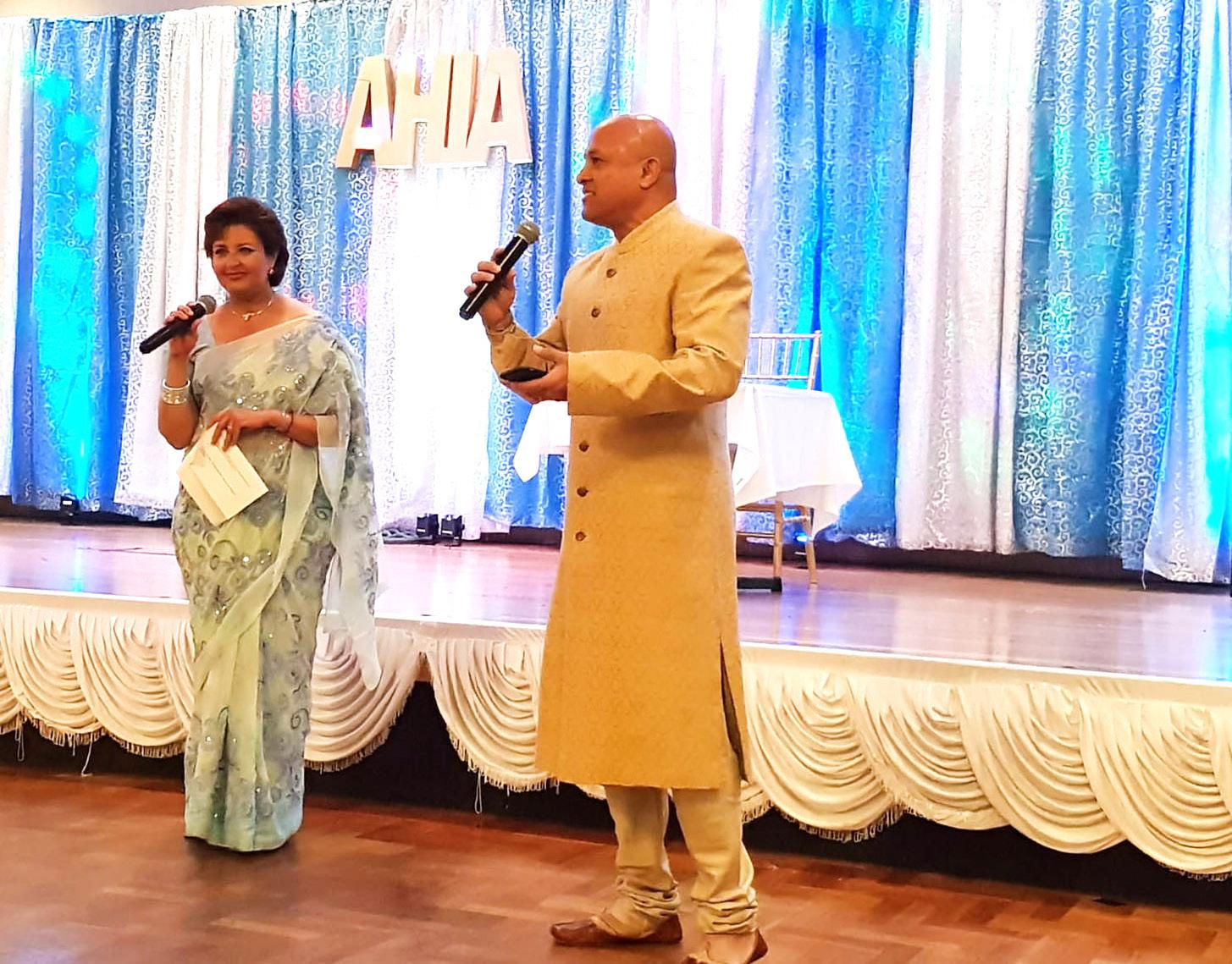
A stunning pair of diamond ear rings, donated by long-time supporter Sanjay Kalra of Twinkle Diamonds helped raise much-needed funds for this longest-serving of Indian associations in Sydney.

The warm send-off with candied nuts was just as special as the welcome at the beginning with traditional mithai.
Rajni Anand Luthra
Welcome Act: Pakistan to host Sikh pilgrims at Kartarpur
80 counters, Federal Investigation Agency (FIA) clearances, 200 strong taskforce and a large immigration hall set to facilitate Kartarpur pilgrims. The Pakistan government has set up arrangements at the Kartarpur Corridor to facilitate Sikh pilgrims arriving from India and all over the world to visit the final resting place of Guru Nanak Dev, the founder of Sikhism.
According to the Interior Ministry, the counters will speed up the clearance process and facilitate a large number of Sikh pilgrims who are expected to show up at one of the Sikh community’s holiest sites to commemorate the 550th birth anniversary of the first Sikh Guru, The Express Tribune reported recently.
The Immigration Department will handle a maximum of 5,000 pilgrims each day. The Federal Investigation Agency (FIA) will send a clearance list of the pilgrims to the Indian border force 10 days before their arrival. The authorities have built three entry gates to facilitate the pilgrims from India. Pilgrims returning to India will be routed through a designated gate.
They will have their passports scanned on their arrival before they are transported to Gurdwara Darbar Sahib in special buses with Pakistan Rangers squads deployed for their protection.
Sikh pilgrims from both Pakistan and India will undergo biometric screening before being permitted to enter Gurdwara Darbar Sahib. They will be able to exit from the same gate which they used for entry while undergoing the verification.
To facilitate operations at the corridor, which is likely to be inaugurated on November 9, the Interior Ministry has appointed two assistant directors and a deputy director in addition to 169 inspectors and sub-inspectors, constables and female constables.
The development comes after India and Pakistan on 24 October signed an agreement to operationalise the Kartarpur Corridor even as the ticklish issue of a $20 service fee imposed by Islamabad remained unresolved. Pakistan is going to earn a whopping 30 lakh dollars per month from pilgrims visiting Darbar Sahib in Pakistan’s Kartarpur, the final resting place of Guru Nanak Dev, the founder of Sikhism.
According to Pakistan media reports, as per the agreement signed between India and Pakistan, a pilgrim will have to pay 20 dollars as service fee for the visit to Darbar Sahib. If five thousand pilgrims visit per day, Pakistan will earn 1 lakh dollars every day, or 30 lakh dollars per month.
Though India signed the pact with Pakistan for ensuring smooth travel of pilgrims through the Kartarpur Corridor, it has asked Islamabad to review the decision to levy service fee in future. An immigration hall has also been built at Zero-Point, 4 km away from Darbar Sahib, to facilitate the pilgrims. The agreement paves the way for Sikh pilgrims to visit the holy shrine located 4.5 km from the border in Narowal district of Pakistan’s Punjab province throughout the year. The 4.2 km-long corridor from the Indian side in Dera Baba Nanak area in Punjab’s Gurdaspur district will be completed a week before the celebrations are slated to begin.
Delhi: To breathe or not to breathe?

Air in Delhi turned "Hazardous" during Diwali with the Air Quality Index (AQI) recorded at 999 in the Patparganj area. Emission from firecrackers and stubble burning in adjoining areas of National Capital Region increased the pollution level. The situation is expected to be worsen in coming weeks.
According to the AQI data recorded till 11 pm, the pollution level at the National Malaria Institute, Dwarka was 763 with high number of PM 10 (tiny particulate matter of diameter 10 micron or less). At ITI Jahangirpuri, the pollution level was 407 followed by Srinivaspuri at 313, both in poor category. In Chanakyapuri area where US embassy is located, the AQI was 189 at 8 p.m. and at Jawahar Lal Nehru Stadium it was 168.
At no place, the AQI monitors showed less than 100. This data was compiled by
AQI monitors.
The PM matter reached a high of 515 mcg at Anand Vihar as per the Delhi government's air quality monitors.
In 2018 Diwali, the AQI had crossed the 600-mark, 12 times the safe limit.
AQI between 0 and 50 is considered safe, 51-100 satisfactory, 101-200 moderate, 201-300 poor. At 301-400, it’s considered very poor and 401-500 falls in the severe category. Above 500 is severe or emergency category.
'Bad air cutting lives short by 7 years in Hindi heartland'
A new analysis of the Air Quality Life Index (AQLI) showed the average citizen living in the Indo-Gangetic plain region can expect to lose about seven years of life expectancy. Particulate pollution is high in Bihar, Chandigarh, Delhi, Haryana, Punjab, Uttar Pradesh and West Bengal.
The study by Energy Policy Institute at the University of Chicago (EPIC)showed that this is because air quality fails to meet the World Health Organisation WHO’s guideline for fine particulate pollution.
It is a 72 per cent increase in pollution from 1998 to 2016 in the region that is home to about 40 per cent of India's population.
In 1998, the impact on people's lives would have been half of what it is today, with residents losing 3.7 years of life expectancy.
In 1998, citizens living outside of the Indo-Gangetic plain region would have seen their lives cut short by 1.2 years relative to what it would have been if air quality met the WHO guideline.
That number has grown to 2.6 years, also worsening but much more modest than what has taken place in the Indo-Gangetic plain.
The findings were announced as the full platform of the AQLI was made accessible in Hindi, expanding the Index's ability to inform citizens and policymakers about particulate air pollution -- the greatest threat to human health globally.
"With the addition of this Hindi version, hundreds of millions more users will be able to learn how particulate pollution is affecting their lives, and, importantly, how air pollution policies can make an enormous difference in increasing life expectancy," said Michael Greenstone, the Milton Friedman Distinguished Service Professor in Economics and director of EPIC.
If India is successful in meeting its goals under the National Clean Air Programme, and sustaining pollution reductions of about 25 per cent, the AQLI shows that such improvements in air quality would extend the life expectancy of the average Indian by 1.3 years.
Those in the Indo-Gangetic plain would gain about two years onto their lives.
Speaking at the Hindi AQLI launch event, Member of Parliament Gaurav Gogoi said, "I am working towards introducing a private member's bill to come up with a new Clean Air (Amendment) act where the health impact of air pollution is given the top priority."
The AQLI is rooted in a pair of peerreviewed studies in which Greenstone and his co-authors exploited a unique natural experiment in China based on China's Huai River Winter Heating policy.
The natural experiment allowed them to isolate the effect of air pollution from other factors that affect health, and to do so at the very high concentrations that prevail in India and other countries today.
They then combined the results from these studies with hyper-localised, global particulate matter measurements, allowing users to zoom in on any district in the world and understand the impacts of that district's local air pollution on life expectancy.
President’s choice: Justice
Bobde to be the 48th Chief
Justice of India
Justice Sharad Arvind Bobde will be the next Chief Justice of India as President Ram Nath Kovind paved his way after signing a warrant appointing him as the next CJI. Justice Bobde was part of the five-judge constitution bench hearing the longest running Ayodhya land dispute case and in which the judgement is still awaited. He will be sworn in as Chief Justice on 18 November and will serve this post for around 18 months.
Present Chief Justice Ranjan Gogoi on 18 October had recommended second seniormost judge Justice Bobde as his successor. Justice Gogoi was the 46th Chief Justice of India, who took the charge on 3 October, 2018 and will demit office on 17 November.
Congress runs Gorakhpur operations on WhatsApp
The Congress insists that it would reclaim its lost ground before the 2022 Assembly elections in Uttar Pradesh, but the party first needs to find some ground for itself. Lacking an office in the Gorakhpur district of Uttar Pradesh, it functions through WhatsApp.
The party leaders said that they had apprised Congress general secretary Priyanka Gandhi Vadra of the situation, but there was no response from the party so far. The newly appointed district Congress president Nirmala Paswan, however, said that the party will soon get its new office.
According to senior party leader Syed Jamal, former district president late Bhrigunath Chaturvedi had started the Congress office in Purdilpur and this remained the party office till 2017. "But we had to vacate the office in 2017 because the ownership rights were with someone else. Since then the Congress does not have a proper office of its own, and meetings are usually held in marriage halls," he said.
Party leaders are informally using a house in Charuchandrapuri as a makeshift office.
Indian millennials join FIRE revolution to retire early
A new emergence of global community called FIRE: Financial Independence, Retire Early, has now reached India.
At 23, Bhopal-based millennial Prateek Jain is the CEO of lifestyle start-up Sttago. with some smart savings and wise investment, he aims to retire by the age of 35. His plan is simple: save early aggressively and invest wisely, cut down on expensive lifestyle and put a significant chunk of the income into investments that will give timely returns towards the golden years.
He feels proud to be part of the global community of FIRE which believes in saving early, living in a financially-restricted regimen and keeping a substantial portion of its income aside in order to take control of things after retiring young.
“I want to experience life in its myriad forms rather than waiting for a seven-day family holiday in an entire year. I want to do things I am passionate about, and not be constrained by funds which most face in the golden years,” Jain told IANS. The thumb rule is to spend only on bare, basic necessities and save the rest.
“I spend on basics like fuel, food and simple living to increase savings. One has to stop living a luxurious life in the initial years to enjoy later on,” he said.
Gone are the days when young adults used to spend all their earnings in partying and shopping. Realising that economic slowdown can hit them anytime, millennials in India have joined the global FIRE movement.
It was popularised by husband-wife duo Kristy Shen and Bryce Leung, who decided to retire at 31 to travel the world. FIRE is dedicated to a wishlist of extreme saving and investment that allows proponents to retire far earlier than traditional budgets and retirement plans would allow.
The idea of the movement was initiated by Vicki Robin and Joe Dominguez in their 1992 best-selling book Your Money or Your Life, and seconded by Jacob Lund Fisker in his 2010 book Early Retirement Extreme These works provide the basic template of combining simple living with income from investments to achieve financial independence.
FIRE is achieved through aggressive saving, far more than the standard 10-15 per cent typically recommended by financial planners. Today, several Indian millennials are sharing their stories on various social media platforms and encouraging others to be part of the revolution.
Ashish Sawlani, 22, who is from RaeBareli and works at a start-up in Gurugram, said the millennial revolution is a solid retirement strategy. “It lays emphasis on the idea of ‘savings’, as our parents taught us. I am making use of this strategy and trying to cut down my daily expenses like travelling and ordering food online. I have shifted to using public transport and I cook my own food. It is working for me,” Sawlani told IANS.
“I can’t see myself working at age 50 and still struggling for financial independence. I want a peaceful retirement as early as 40 so that I can enjoy the rest of my life,” he said.
Keep my change: MP man buys Honda Activa with coins only
A customer in Satna district of Madhya Pradesh purchased a new Honda Activascooty on Dhanteras with the entire amount paid in coins.
Rakesh Gupta brought only five and 10 rupee coins to Krishna Honda showroom here on Dhanteras in 4 gunny bags, paid Rs83,000 and rode home on his all-new Activa 125 BSVI. It took four hours for the showroom workers to count the five and 10 rupee coins.
Showroom manager Anupam Mishra told IANS, "On Dhanteras, Rakesh Gupta came to our showroom in an auto with several gunny bags. He expressed his desire to purchase a Honda Activa 125 BSVI. I talked to the showroom owner Ashish Puri who said that the counting of coins will take time. We did not want to disappoint anyone on Dhanteras, and so decided to fulfil his wish."
Mishra further said that Puri engaged three of his workers to count the coins. "It took four hours to count all the coins. It was also a special occasion for us as both the customers and the showroom owner were satisfied.”
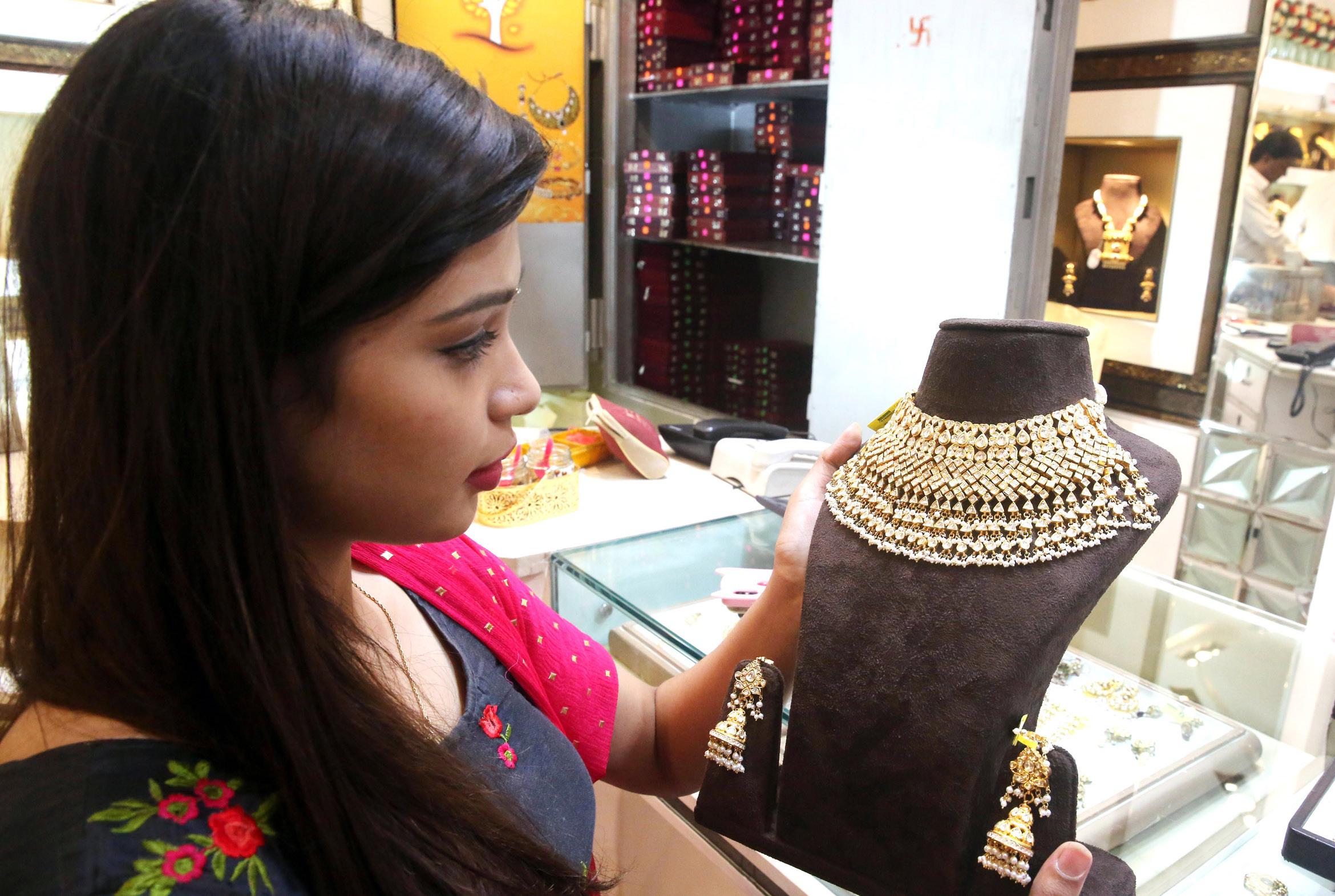
Honda Motorcycles has recently launched the new Activa 125, which is now BS-VI emission norm compliant and has been priced at Rs 74,490 ex-showroom for the top-end disc brake variant.
Indian Railways reassures vacancies for disabled
In an act of reassurance, the Indian Railways has confirmed that vacancies for 'Divyangjan' or specially-abled persons will not be filled by any other categories. In a statement, the railways said it has "a clear commitment to recruit Divyangjan against the posts identified for them as per quota prescribed".
The specially-abled persons had held a sit-in on 23 October to protest against "perceived irregularities" in the filling up of posts reserved for Persons with Benchmark Disabilities (PwBD) in the recent Level-1 recruitment exercise of the Indian Railways.
In 2018, the Indian Railways had issued a centralised recruitment notification for around 63,000 posts on different Railways. This notification also included posts for persons with benchmark disabilities (PwBD).
Subsequently, based on the provisions of the revised PwBD Act that mandated 4 per cent reservation for PwBD categories (including newly introduced Multi Disability category), an additional window was notified for candidates to apply. Thereafter a clear one percent distribution of vacancies for each of the four PwBD categories for the recruitment exercise was made, increasing the total number of vacancies reserved for PwBD to around 2,500.
Envoy's Arunachal visit shows our support for India: US
After US envoy to India Kenneth Juster's visit to the border area of Tawang in Arunachal Pradesh, Washington has said that the visit "highlights resolute US support for Indian sovereignty and commitment to local partnerships".
Alice G. Wells, Acting Assistant Secretary of State, Bureau of South and Central Asia, in a tweet said: "@USAmbIndia's #Tawang visit highlights resolute US support for
Indian sovereignty and commitment to local partnerships. The US funding supports joint public health and social sciences work in #Arunachal by @USouthFlorida and Rajiv Gandhi University."
She attached a tweet by Juster, in which he said, "Such an honor to be Chief Guest at the Tawang Festival and inaugurate the seventh edition of this wonderful celebration. #USIndiaDosti", with pictures of the Tawang Festival and his participation in it.
Juster's visit to Tawang is significant, as three years ago China had protested angrily over the then US envoy Richard Verma's visit to Arunachal Pradesh, which it considers as "South Tibet".
China has so far not reacted to Juster's visit.
Juster was on a three-day visit to Arunachal Pradesh, and was joined by Pattie Hoffman - the US Consul General in Kolkata, West Bengal. The Tawang Festival is organised every year by the state Department of Tourism.
In 2016, China had reacted sharply to Richard Verma's visit to Arunachal Pradesh and warned that third party meddling would only complicate the dispute between Beijing and New Delhi.
India has told China that Arunachal Pradesh is an integral part of the country.
Juster's visit to Tawang also comes days after India and China held their second informal summit in Mahabalipuram in Tamil Nadu between Prime Minister Narendra Modi and Chinese President Xi Jinping.
Juster said that the US has modernised hospitals and health facility centres in Namsai and Pasighat.
He added that the University of Florida has collaborated with Arunachal Pradesh's lone central university - the Rajiv Gandhi University - for combined research work.
Chief Minister Pema Khandu said the state was fortunate to host two US Ambassadors to India in a span of three years. He briefed the visiting dignitaries about the strengths, challenges and opportunities of the state.










